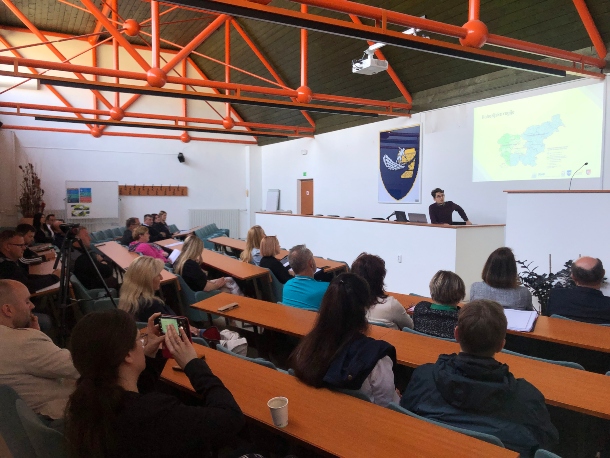
Results of P-IRIS project in the Heart of Slovenia
P-IRIS project has been leaving significant traces in the Heart of Slovenia since 2017
Young people are leaving rural areas because they do not find jobs answering their professional aspirations. There is therefore a need to boost innovation in these areas in order to develop knowledge-based or creative businesses, offering attractive jobs for well-educated and creative young people. The partners from Norway, Finland, Slovenia, Croatia, Italy and Spain have identified that triple helix (3H) or quadruple helix (4H) cooperation is important to boost innovation in rural areas. Management of innovation tools must not copy lessons and solutions from metropolitan areas but be adapted to the specific features of rural innovation systems, which are characterised by asymmetric relations and uneven resources between public, R&D and SMEs actors, and by shortage of scientific disciplines.
The overall objective of P-IRIS is to improve policies related to 3H / 4H cooperation in rural innovation systems. We want to increase the number of SMEs in innovative networks and the number of innovation projects including R&D. It is also an ambition to improve the skills of public authorities & support systems as managers and mentors of 3H or 4H networks, and the use of related innovation tools. A 3-step interregional learning process will be applied:
Six policy instruments will be improved in terms of governance measures and new projects. 9,5 MEUR in Structural Funds, as well as 5,1 MEUR of other funds are estimated to be influenced by the project. The implementation of improved policy instruments are envisaged to improve the innovation readiness in rural areas by increasing the number of SMEs cooperating with R&D institutions and authorities, and raising the share of businesses based on advanced knowledge or creative skills - increasing green growth and eco-innovation.
€1,499,410.00
Research and innovation
In the SVCP the county has set a goal to create 500 new jobs every year to offset the challenge of decline in the young population. It is underlined that we need to give priority to creating jobs that are knowledge intensive; both to have competitive businesses and to have businesses attractive to well-educated youth. SVCP describes Knowledge and Innovation as horizontal priorities and 5 strong sectors; Tourism, Agriculture, Seafood, Oil & gas and Renewable energy. The SVCP is updated annually. The annual program is linked to funding and is adopted by the relevant regional political body within the County Council. An amount of 15.000.000€ per year is avaliable as public funding and approximately 1/5 of this will be influenced by the project. A strategic level partnership, the Economic Development Forum, is established to follow up the implementation.
Research has documented that our innovation system is dominated by a strong public sector. The implementation of the SVCP therefore needs to be improved by reinforced SME participation. In particular, we need to strengthen innovative triple helix networks by making them more commercially targeted, more cost-effective and to compensate incompleteness, tendencies of lock-in and fragmentation of our rural innovation system.
Also due to budget decrease it is important to change focus from funding innovation projects to become more skilled in facilitating arenas for cooperation aimed at commercial innovation.
The project is addressing priority 1.3: implementation of knowledge, technology and innovation in economy, strategic goal 1.5.4: Development of industry. The PI has funding. The main problem in Primorje-Gorski kotar county is low level of economic development especially in rural areas. Within priority 1.3 there is need for inclusion of main sectors (wood and tourism) in rural areas in the implementation of future innovation activities.
Main reasons for improvements are:
This project is directly affecting the Finland national investment priority 1 “Enhancing the competitiveness of SMEs” and priority 2 “Producing and using new information and knowledge” in European Regional Development Fund (ERDF) for 2014-2020. 5,9 M euros are allocated to these priorities. The project addresses the programme allocated to and managed by the Regional Council of Central Ostrobotnia.
The project is also directly related with the objective to enhance the development of attractive products and innovation environments, as well as co-operation and regional networks among companies, research institutes, higher education institutions and polytechnics, not to mention the public and third sector.
The Priority axes related with the thematic objectives correspond mainly to the smart and sustainable growth pillar of the Europe 2020 Strategy
Innovation resources differ significantly between the main urban area Kokkola and remote, low-populated areas like Lestijärvi and Halsua. In such rural areas affected by this proposal SMEs have poor connections to R&D resources, and the triple helix cooperation structures are incomplete and fragmented. There is thus a need to improve the conditions for developing knowledge-intensive SMEs, also attractive for well-educated and creative young people in the rural areas of the region.
SDP was elaborated to meet interest of all involved municipalities for more balanced development of the territory, reducing development disparities and improved competitiveness. Bottom-up approach was followed so identified programmes reflect real needs of local area.1 of 6 development priorities is Environment with knowledge, competences and innovation with specific goals related to creation of new innovative ideas, realisation of innovation, new work places based on realised innovation, activation of educational institutions in training programmes in the field of innovation and involvement of entrepreneurs in different education programmes.
Defined measures: networking of economy, science and design, development directions and action plans for encouraging innovation, creation of stimulatory environment for innovation, detecting and networking innovative potentials of individuals and institutions, promotion and inclusion of innovation in formal education system, upgrade of local strategies to be more innovation oriented, ensuring financing for innovative projects, involvement of external experts form innovation field, knowledge transfer for enhancing creativity and innovation etc. It should be improved to upgrade the innovation system of the HoS by professionalising management of existing networks of the HoS (6 networks) based on more balanced quadruple helix and development of new integrated innovative projects. 975.000 € is available for concerned priority of SDP.
This new policy instrument for the period 2014-2020 in the Spanish region of Castilla y León includes six different priority axes related with the thematic objectives corresponding mainly to the smart and sustainable growth pillar of the Europe 2020 Strategy.
This project affects directly priority axis number one (“Promoting research, technological development and innovation”) with 86 M€ of funds allocated.
On these grounds, the project is directly related to the second investment priority of:
1.2. Promoting the business investment in innovation tools and development of links (and transfer of innovation) between business and universities or technological centres.
The main reason for improving this policy instrument is related with the lack of concrete focus on rural areas. Resources are completely different between urban areas and those which are not. According to the areas affected by this proposal in the province of Burgos there is a lack of both proper structures and connection among all stakeholders involved in rural innovation systems.
Lombardy’s ROP ERDF 2014-2020 supports the strengthening of research, technological development and innovation (Thematic objective 1 – Priority Axis 1), also as a driver of business competitiveness (Thematic objective 3 – Priority Axis 3) and the development of marginal areas (Thematic objective 6 – Priority Axis 6). Actions included in Priority Axis 1 (349,355 M€ of public funding) aim at: -promoting innovation in SMEs; -fostering research and development collaborative activities among R&D and innovation centres; - supporting networks and synergies among enterprises and between enterprises and research system; -nurturing R&D and innovation demand by Public Sector.
Priority Axis 1 addresses the whole of Lombardy (23.800 km2, about 10 million inhabitants) and its implementation is now at an early stage. However, data from the past programming period (ROP ERDF 2007-2013) show that nearly the whole amount of the investments in R&D and innovation were directed to main urban centres, such as Milano, Brescia or to their hinterland. There is therefore a need for improving and strengthening R&D and innovations systems in “non-urban” areas, including rural and marginal ones, for a better involvement in 2014-2020 ERDF implementation. P-IRIS will support expressing the Valcamonica potential, an “inner area candidate” under Axis 6, showing a relevant development planning attitude and a robust will in addressing local fragmentation and lock-ins to innovate its economic system.

P-IRIS project has been leaving significant traces in the Heart of Slovenia since 2017

P-IRIS has inspired the cluster program of Norway.
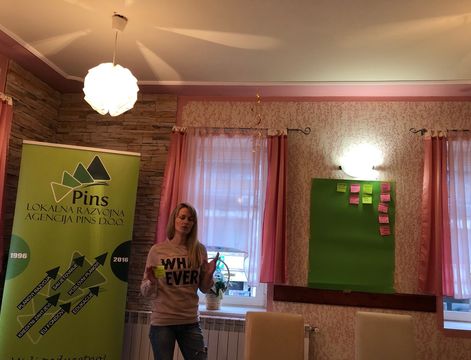
How P-IRIS project partner PINS approached establishing a co-working space
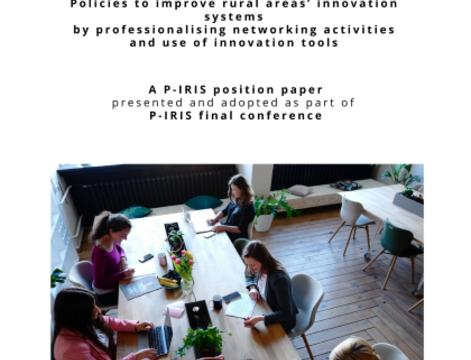
A P-IRIS position paper presented and adopted as part of P-IRIS final conference

P-IRIS project will be represented in the Online Thematic Workshop organised by the Policy Learning Platform “University-Industry Collaboration” on 11th March
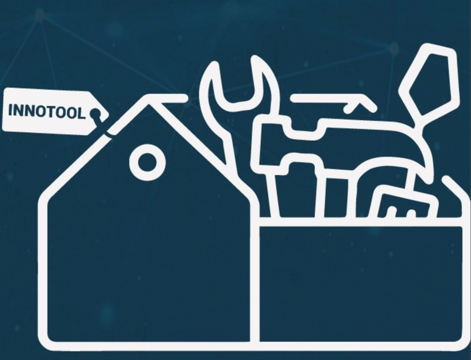
At P-IRIS final conference Innotool, an innovation network toolbox was launched.

In case you missed it, watch the digital workshop and Final Conference now!
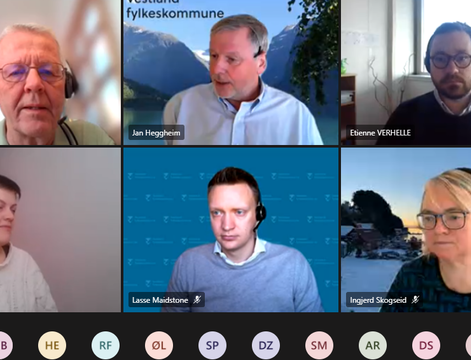
P-IRIS projects Final Conference held on February 11 2021 online
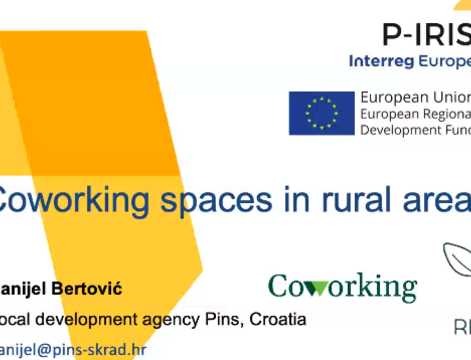
P-IRIS partners on lessons learned on establishing rural co-working spaces

P-IRIS partners held a digital workshop on Living labs and user groups as part of rural innovation systems on 10 February 2021.